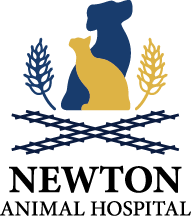Library
-
Atovaquone (brand names: Mepron, Malanil, Wellvone) is a drug used to treat infections caused by protozoa (single-celled organisms that cause disease). It is often combined with other drugs to treat specific infections.
-
Atrial fibrillation describes rapid contractions or twitching of the heart muscle, specifically in the atria. In cats, atrial fibrillation occurs secondary to heart disease. The signs that are observed are often related to that underlying condition, and may include exercise intolerance, cough, or difficulty breathing. Signs, treatment, and outlook are discussed.
-
Atrial fibrillation describes rapid contractions or twitching of the heart muscle, specifically in the atria. In dogs, atrial fibrillation usually occurs secondary to heart disease. In some large breed dogs, atrial fibrillation occurs as a primary heart problem. Signs, treatment, and outlook are discussed.
-
Atrioventricular (AV) valve dysplasia is a developmental malformation of the mitral or tricuspid valve in the heart. Signs include exercise intolerance, accumulation of fluid in the abdomen, weight loss, and stunted growth. Difficulty breathing or collapse may occur if congestive heart failure develops. Treatment of AV valve dysplasia is focused on managing signs of congestive heart failure and/or disturbances in heart rhythm, generally using medications.
-
Atrioventricular (AV) valve dysplasia is a developmental malformation of the mitral or tricuspid valve in the heart. Signs include exercise intolerance, accumulation of fluid in the abdomen, weight loss, and stunted growth. Difficulty breathing or collapse may occur if congestive heart failure develops. Treatment of AV valve dysplasia is focused on managing signs of congestive heart failure and/or disturbances in heart rhythm, generally using medications.
-
Atropine ophthalmic (brand name Isopto Atropine) is an eye medication used to dilate (enlarge) the pupil. It is used off label (extra label) only, in all veterinary species of animals. Atropine ophthalmic comes in a 1% drop, solution, or ointment form, which is placed directly into the eye.
-
Attapulgite (brand name Toxisorb™ Bolus) is an anti-diarrhea clay supplement used in pets like dogs, cats, horses, and cattle. It works by binding bacteria and toxins to help restore a healthy intestinal system.
-
AIHA or IMHA is a life-threatening condition that may occur as a primary condition or secondary to another disease. Most cats with AIHA have severe anemia and their gums will be very pale. They will be anorexic, listless, easily tired, and will have increased heart and respiration rates. Diagnosis involves a complete blood count (CBC), biochemical profiles, urinalysis, and X-rays or ultrasound of the abdomen and chest. Treatment may involve blood transfusions and other medications over a prolonged time. The prognosis may be better if an underlying cause can be identified.
-
AIHA or IMHA is a life-threatening condition that may occur as a primary condition or secondary to another disease. Most dogs with AIHA have severe anemia and their gums will be very pale. They will be anorexic, listless, easily tired, and will have increased heart and respiration rates. Diagnosis involves a complete blood count (CBC), biochemical profiles, urinalysis, and X-rays or ultrasound of the abdomen and chest. Treatment may involve blood transfusions and other medications over a prolonged time. The prognosis may be better if an underlying cause can be identified.
-
Autoimmune disease causes the immune system to attack itself by mistake, causing illness. With autoimmune skin disease the immune system attacks the body's own skin tissues. Variations of autoimmune skin disease are described, along with clinical signs, diagnosis, treatment, and prognosis.


